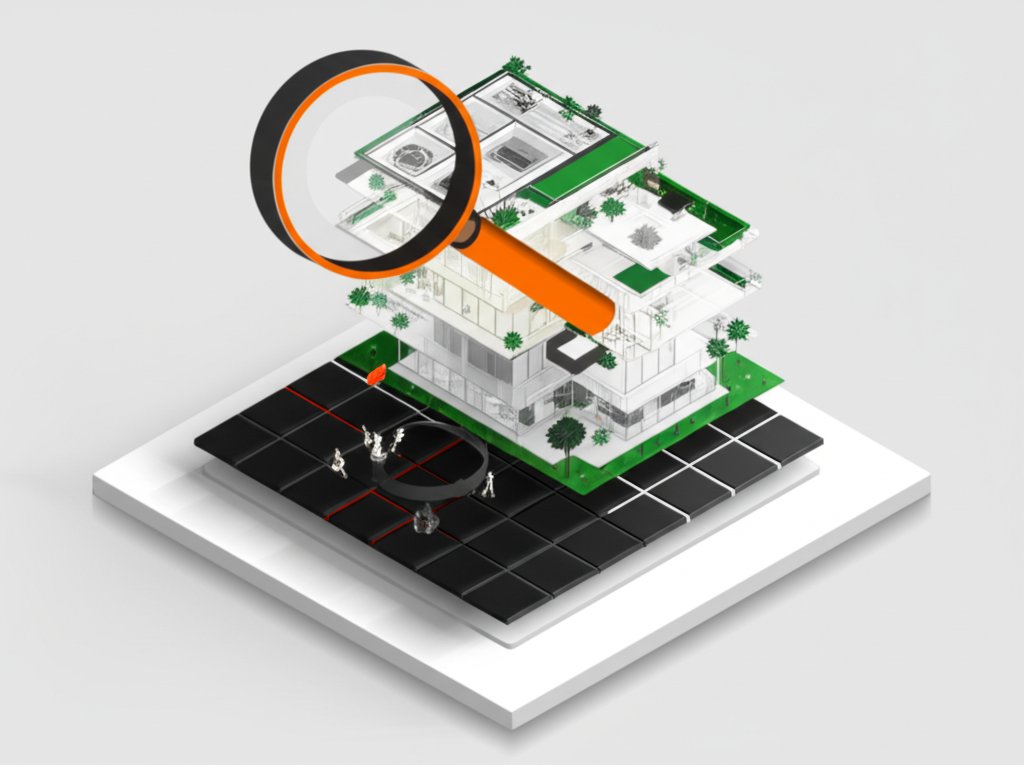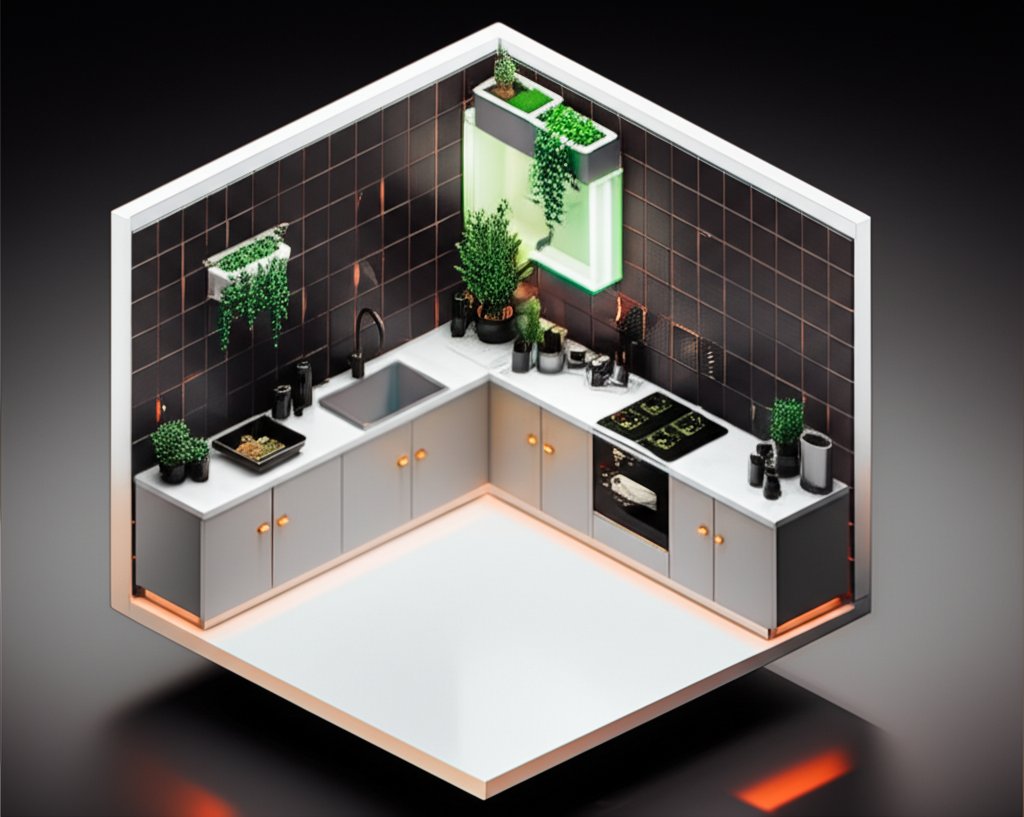Choosing the right backsplash can make or break your kitchen’s aesthetic, and black backsplash tile offers a dramatic and versatile option. But with so many styles, materials, and finishes, how do you know what’s right for your space?
At a glance:
- Discover the variety of black tile materials and how they impact design and maintenance.
- Learn about different design styles that complement black backsplashes, from modern to farmhouse.
- Understand the importance of grout color and lighting when working with black tile.
- Get answers to common questions about cleaning, cost, and installation.
- Walk away with a clear sense of which black backsplash tile will work best in your kitchen.
Why Choose Black Backsplash Tile?
Black backsplashes aren’t just a trend; they’re a statement. They add depth and sophistication to any kitchen. The beauty of black backsplash tile lies in its versatility. Need a sleek, modern look? Matte black subway tile is your answer. Craving drama? Consider a high-gloss black mosaic. No matter your taste, there’s a black tile to match.
Material Matters: Exploring Black Tile Options
The material you choose for your black backsplash tile impacts not only the look but also the cost, durability, and maintenance. Here’s a rundown of popular materials:
- Ceramic: Budget-friendly, easy to clean, and available in a wide range of styles. Ceramic is a great choice if you’re looking for an affordable and practical option.
- Porcelain: More durable and water-resistant than ceramic, making it ideal for high-moisture areas. Porcelain is also less prone to staining, making it a great choice for behind stoves and sinks.
- Glass: Reflective and eye-catching, glass tile can brighten up a dark kitchen. However, it can show water spots and fingerprints more easily than other materials.
- Natural Stone (Slate, Granite, Marble): Adds a touch of luxury and natural texture. Requires sealing and more careful maintenance to prevent staining. Expect to pay more for natural stone, but the unique look can be worth the investment.
- Mosaic: Offers endless design possibilities with small tiles arranged in patterns. Can be made from glass, ceramic, or natural stone. Mosaic tiles often have more grout lines, which can require more cleaning.
Example: Imagine a modern kitchen with stainless steel appliances. A black glass subway tile backsplash would create a sleek, high-contrast look. Conversely, a farmhouse kitchen might benefit from a black slate backsplash, adding a rustic and textured element.
Style Guide: Matching Your Black Backsplash With Your Kitchen’s Aesthetic
Black is a bold color, and your choice of tile style should complement the overall design of your kitchen.
- Modern/Minimalist: Opt for large format tiles, simple geometric patterns, or sleek subway tiles in matte or high-gloss finishes. Think clean lines and minimal grout lines.
- Traditional: Consider intricate mosaic patterns, or classic subway tiles with beveled edges. A natural stone like black granite can also work well in a traditional setting.
- Farmhouse: Embrace textured tiles, like slate or reclaimed-look ceramic. Consider mixing different sizes and shapes for a more rustic feel.
- Industrial: Raw, exposed brick or concrete-look tiles can create an edgy, industrial vibe. Pair with stainless steel accents for a cohesive look.
- Glam: High-gloss finishes, metallic accents, and luxurious materials like marble can add a touch of glamour to your kitchen.
Case Snippet: A homeowner renovated their mid-century modern kitchen with white cabinetry and stainless steel appliances. They chose a black hexagon tile backsplash to add a geometric element and a touch of drama, perfectly complementing the clean lines of the space.
Don’t underestimate the impact of tile size. Larger tiles can make a small kitchen feel more spacious, while smaller tiles can add visual interest and texture.
Grout Selection: The Unsung Hero of Black Tile

Grout is more than just filler; it’s a crucial design element that can significantly impact the look of your black backsplash tile.
- Light Grout: Creates a high-contrast look, highlighting the individual tiles and emphasizing the pattern. This can be a good choice for intricate mosaic patterns or subway tile backsplashes. Be aware that light grout can be more difficult to keep clean.
- Dark Grout: Creates a seamless, monolithic look, minimizing grout lines and allowing the black tile to take center stage. This is a good choice for modern and minimalist kitchens.
- Color-Matched Grout: Creates a subtle, unified look. Choose a grout color that closely matches the black tile to minimize grout lines and create a clean, sophisticated appearance.
Practical Playbook:
- Consider the size of your tiles: Larger tiles require less grout, so the color may be less noticeable.
- Think about the location of the backsplash: Areas prone to splatters and spills may require a darker grout color to hide stains.
- Test grout colors before committing: Apply a small amount of grout to a sample tile and let it dry to see the final result.
Lighting: Illuminating Your Black Backsplash
Proper lighting is essential to showcase the beauty of your black backsplash tile. Without adequate lighting, a black backsplash can make a kitchen feel dark and dreary.
- Under-Cabinet Lighting: Provides task lighting for food preparation and highlights the texture and detail of the backsplash. LED strip lights are a popular and energy-efficient option.
- Pendant Lighting: Adds decorative flair and ambient lighting to the kitchen. Choose pendant lights that complement the style of your backsplash.
- Recessed Lighting: Provides general illumination and helps to balance the light in the kitchen.
Decision Tree:
- Assess existing lighting: Is the kitchen naturally well-lit? Or does it rely heavily on artificial light?
- Identify task areas: Where do you need the most light for food preparation?
- Choose lighting fixtures that complement the style of your backsplash: Sleek, modern fixtures for a contemporary kitchen; warm, traditional fixtures for a farmhouse kitchen.
DIY vs. Professional Installation: What’s Right For You?

Installing a black backsplash tile can be a rewarding DIY project, but it’s essential to assess your skills and the complexity of the project before you begin. If you’re installing simple subway tiles in a straightforward pattern, you may be able to handle the job yourself. However, if you’re working with intricate mosaic patterns, natural stone, or have limited experience with tiling, it’s best to hire a professional. You can find more information about kitchen backsplash design by reading Here are a few options, aiming for naturalness and context-appropriateness: * Black Backsplash Design Ideas * Explore Black Kitchen Backsplashes * Black Backsplash Inspiration Guide * Ultimate Black Backsplash Guide which provides a broader overview of black backsplashes.
DIY Considerations:
- Time Commitment: Tiling can be time-consuming, especially for beginners.
- Tools and Equipment: You’ll need a tile cutter, trowel, grout float, sponge, and other specialized tools.
- Skill Level: Are you comfortable cutting tiles, applying mortar, and grouting?
- Potential for Errors: Mistakes can be costly to fix.
Professional Installation Benefits: - Expertise and Experience: Professionals have the knowledge and skills to ensure a flawless installation.
- Time Savings: Professionals can complete the job much faster than a DIYer.
- Warranty: Many professional installers offer warranties on their work.
Quick Answers: Common Questions About Black Backsplash Tile
- Q: How do I clean black backsplash tile?
- A: Use a mild soap and water solution. For tougher stains, try a vinegar and water mixture. Avoid abrasive cleaners, which can scratch the surface of the tile.
- Q: Is black backsplash tile too dark for a small kitchen?
- A: Not necessarily. Pair it with light cabinets and countertops to create contrast and balance. Good lighting is also essential to prevent the kitchen from feeling too dark.
- Q: How much does black backsplash tile cost?
- A: The cost varies depending on the material, size, and complexity of the installation. Ceramic and porcelain tiles are generally the most affordable options, while natural stone and glass can be more expensive.
- Q: Can I use black backsplash tile with dark cabinets?
- A: Yes, but be careful. It can create a very dramatic and moody look, but it can also make the kitchen feel small and claustrophobic. Consider adding pops of color with accessories and plenty of lighting to brighten up the space.
Actionable Close: Your Black Backsplash Tile Checklist
Ready to choose the perfect black backsplash tile? Here’s a quick checklist to guide you:
- Define Your Style: What’s the overall aesthetic of your kitchen? Modern, traditional, farmhouse, or something else?
- Choose Your Material: Consider the pros and cons of each material (ceramic, porcelain, glass, natural stone) and choose the one that best suits your needs and budget.
- Select Your Tile Style: Subway tile, mosaic, large format, or something else?
- Pick Your Grout Color: Light, dark, or color-matched?
- Plan Your Lighting: Ensure you have adequate lighting to showcase your backsplash.
- Decide on DIY or Professional Installation: Assess your skills and the complexity of the project before you begin.
With careful planning and the right choices, your black backsplash can transform your kitchen into a stylish and inviting space.
- Backsplash For Cooktop: Stylish Ideas To Protect and Enhance - December 25, 2025
- Stove Backsplash Ideas: Find Your Perfect Kitchen Style - December 24, 2025
- Stovetop Backsplash Ideas: Stylish Protection for Your Kitchen Cooking Zone - December 23, 2025










